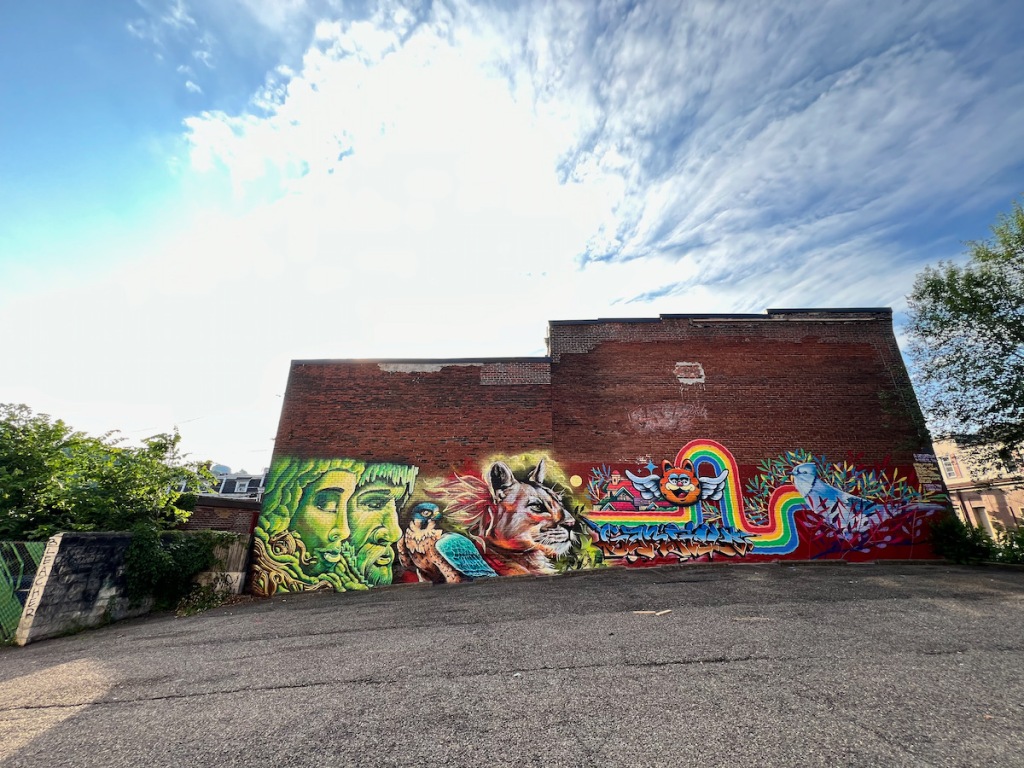by Emma Riva
There’s no recreating the moment when spraypaint hits a wall. It’s a physical thing, with the crack of the cap and the sharp woosh of the paint leaving the can. Hemispheric Conversations Urban Art Project (HCUAP), pronounced “hiccup,” recognized that that moment was something that could create shared understanding and new dialogue. The paradox of graffiti is that it’s both a public art form universally visible, but at the same time only people in the know of the culture are able to recognize its nuances. I came to graffiti as a journalist through UP Mag and lifelong New Yorker, but when I moved to Pittsburgh, I began to try to learn more about the city’s graffiti history. I started working with HCUAP this past fall through knowing Caitlin Bruce, Max Gonzales, and Shane Pilster.
Along with doing legal advocacy and public programming like talks and classes, HCUAP runs a yearly residency bringing in international graffiti writers to Pittsburgh. Institutionally funded programs like this in the world of graffiti are rare, and when I became involved with HCUAP it was astounding to me that more people weren’t aware of its existence. Funding from University of Pittsburgh through Dr. Bruce allows for artists from far corners of the world to come to Pittsburgh, share their experiences, and contribute to the city in the form of public art.
2024 brought Dak Pak de la Selva (Mexico), Paula Tikay (Chile), and Melon James (Hawai’I, though he made sure to mention he’s originally from Chicago and developed his style there). Dak, Melon, and Paula’s work can now be found at 6815 Hamilton Avenue in Homewood—where huge violet letters proclaim WELCOME TO HOMEWOOD–and 4823 Penn Avenue in Garfield. The Homewood mural had thirty-eight writers from Pittsburgh come out to work on the interior of the building with style writing while the visiting artists worked on the exterior. (de la Selva later referred to it as a “mini festival.” It may as well have been).
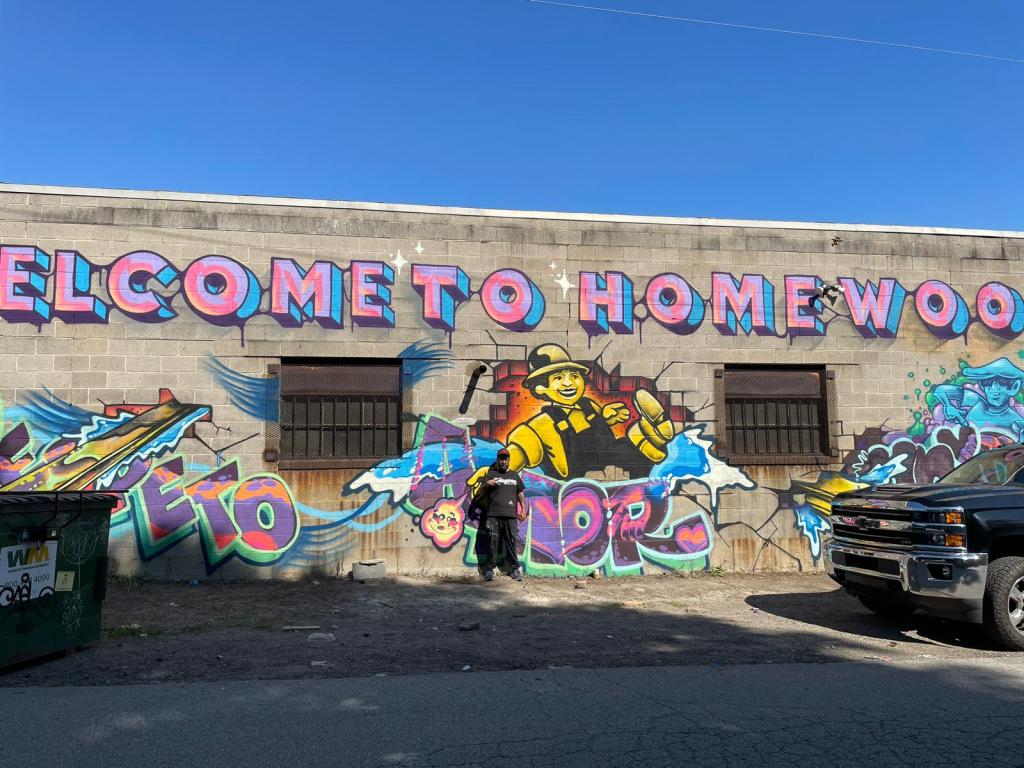
“I wanted people in Homewood to feel proud of their neighborhood and like they could say ‘yeah, welcome to Homewood!’ People say ‘the streets talk,’ and sometimes that’s a bad thing, but other times it can be good,” James said in the artist talk accompanying the residency. For James in particular, graffiti was a way out of a gang lifestyle and allowed for a sense of personal agency. Before coming to Pittsburgh, his only connection to it was that in his neighborhood in Chicago, Roberto Clemente High School was a dividing line among gangs. Graffiti was a passion project he did while navigating the streets, but legal trouble eventually meant he had to leave Chicago. He made his way to Hawai’i after serving in the military, and while working as a car salesman in Honolulu, his wife encouraged him to pursue art professionally outside of just his illegal tagging. “I’ve had friends die in my arms in Chicago, and I thought to myself, why don’t I just shoot my shot? I have the chance. My friends didn’t,” he said. Often his art features waves and octopi, and the octopi represent the tentacles of things pulling you down that you have to fight against.
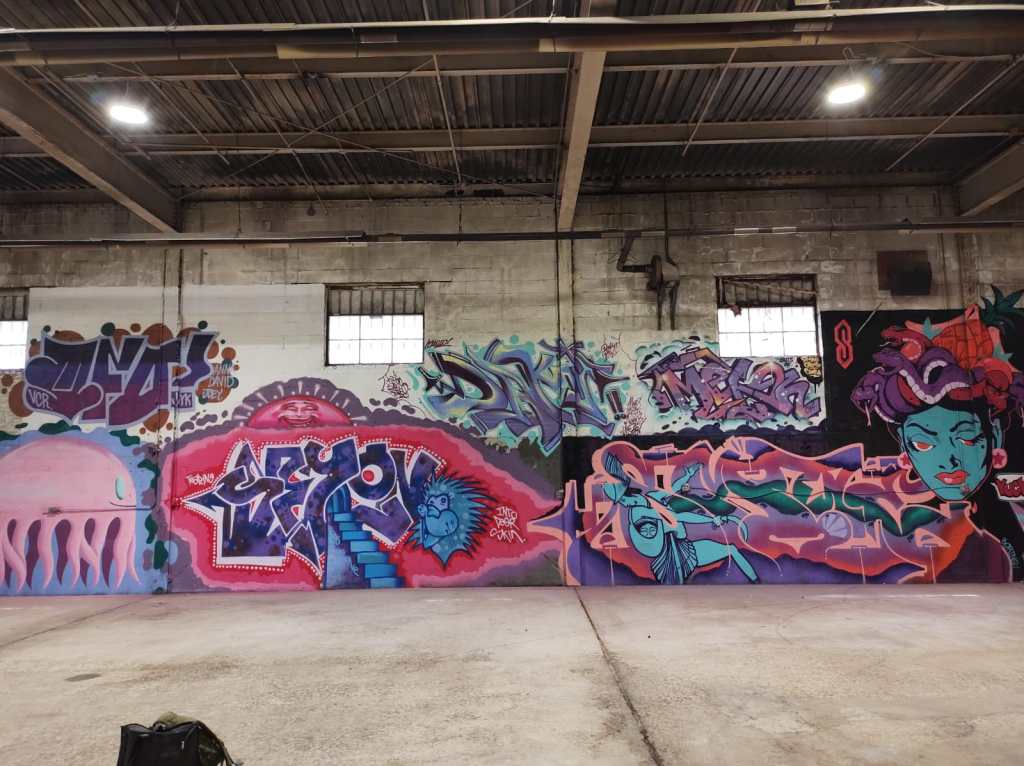
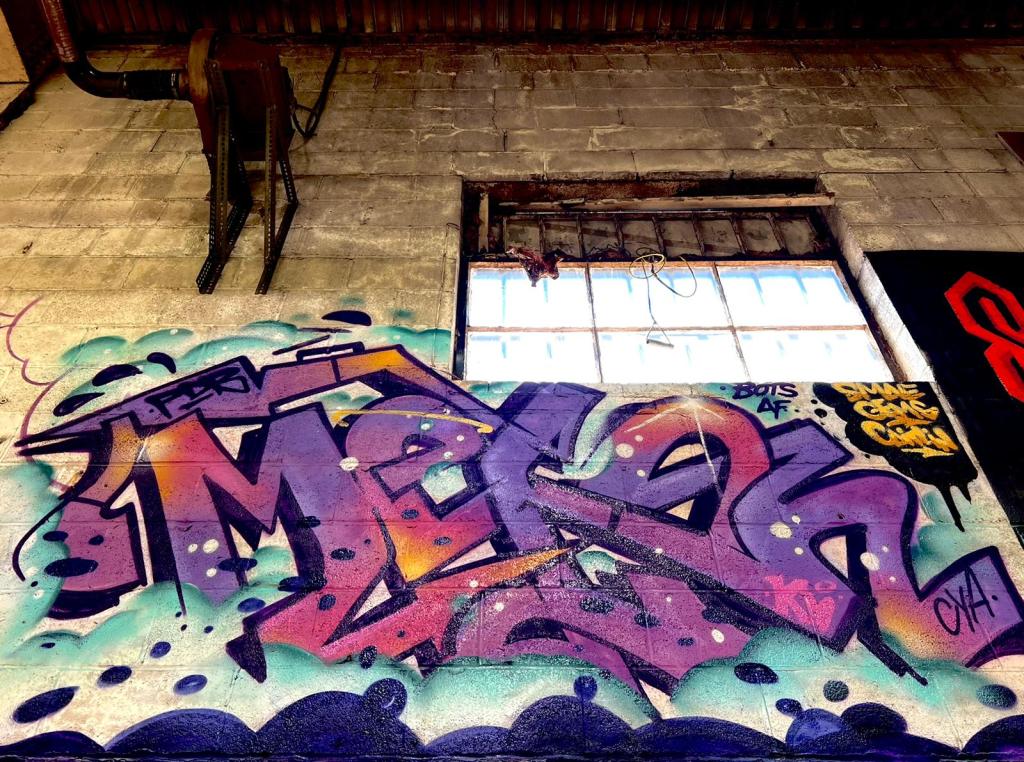
James, Tikay, and de la Selva had never worked together or even met before doing the residency. “I didn’t know if my style, which is more cartoon, would go well with two more portrait-like styles, but we made it work,” James said.
Tikay felt similarly: “Most of the time, when I collaborate with my husband for the murals I do, we plan it. But in Pittsburgh, working with Dak and Melon, it was more improvised,” she said. It was Tikay’s first time in the United States—she lives in a forested community in the south of Chile with her family and travels frequently to paint walls in other countries, but Pittsburgh was her first project in the United States. In her introductions to each event, she showed a photo of the forest and then the wooden slats of a tiny rural bus stop with the remark “There aren’t many walls there.” The lack of walls certainly hasn’t stopped her from developing a robust and vibrant art practice, though. Tikay has a unique ability to capture figures, whether humans or animals. Everything in her art looks strong and powerful while still retaining its beauty and grace, whether it’s a face on the wall in Homewood or the blue-jay on the wall in Garfield, which she saw in Schenley Park.
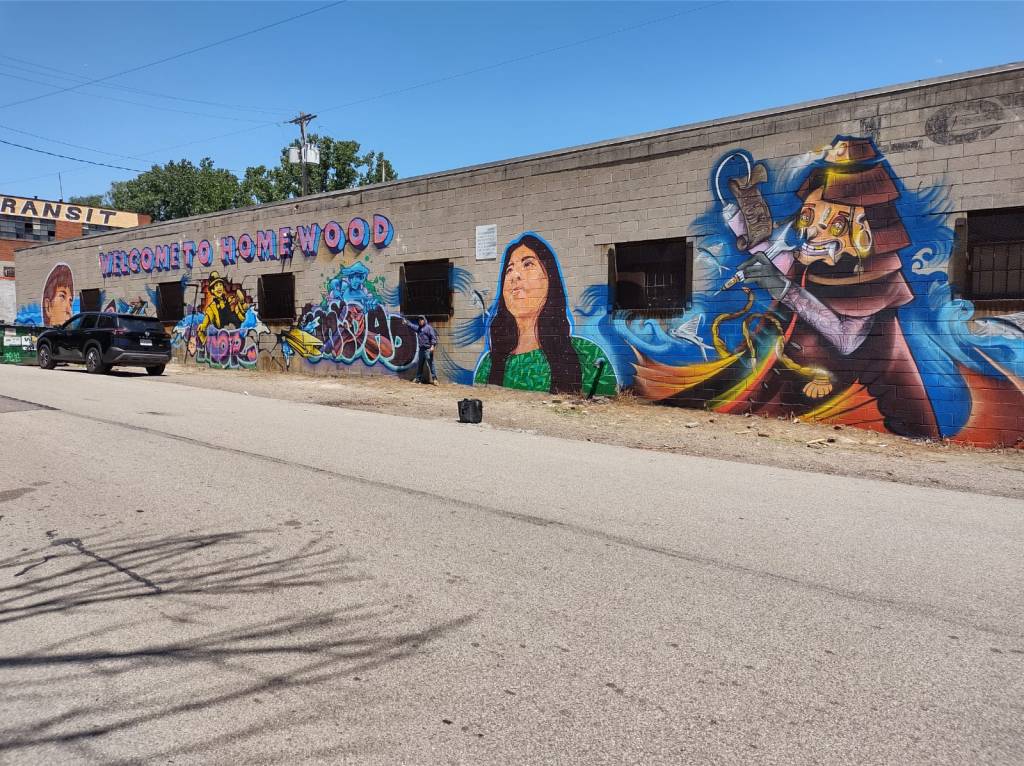
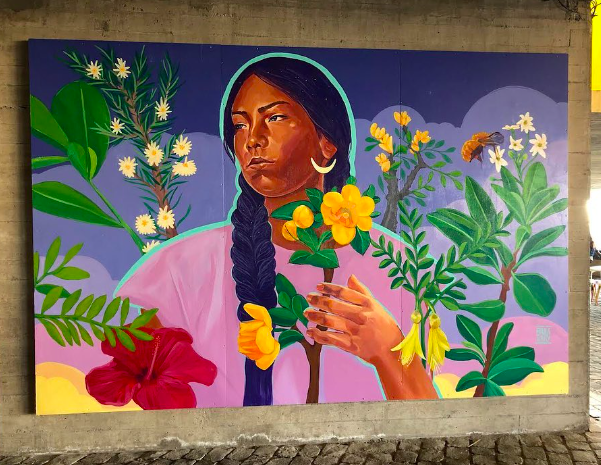
de la Selva is remaining in Pittsburgh slightly longer, partially because he’s completing a second residency: A collaborative tattooing residency with Eryn Oberst in Garfield. Along with his graffiti, de la Selva tattoos, though his styles in both are similar. “In my artwork, I’m most interested in masks, and how masks from Japanese and Mayan culture look similar,” de la Selva said. His work has a psychedelic feeling to it at times and he works at a huge scale. Anyone walking down Penn Avenue will be able to see that in the form of the puma he painted on the Garfield wall. (He called it a “pumita,” but it’s huge). The intricacy and depth of his murals shows up, too, in his tattoos. de la Selva chose not to fly back earlier in order to tattoo more and spend some more time in the city, so if anyone is looking for a new tattoo in the next week, he’ll be around.
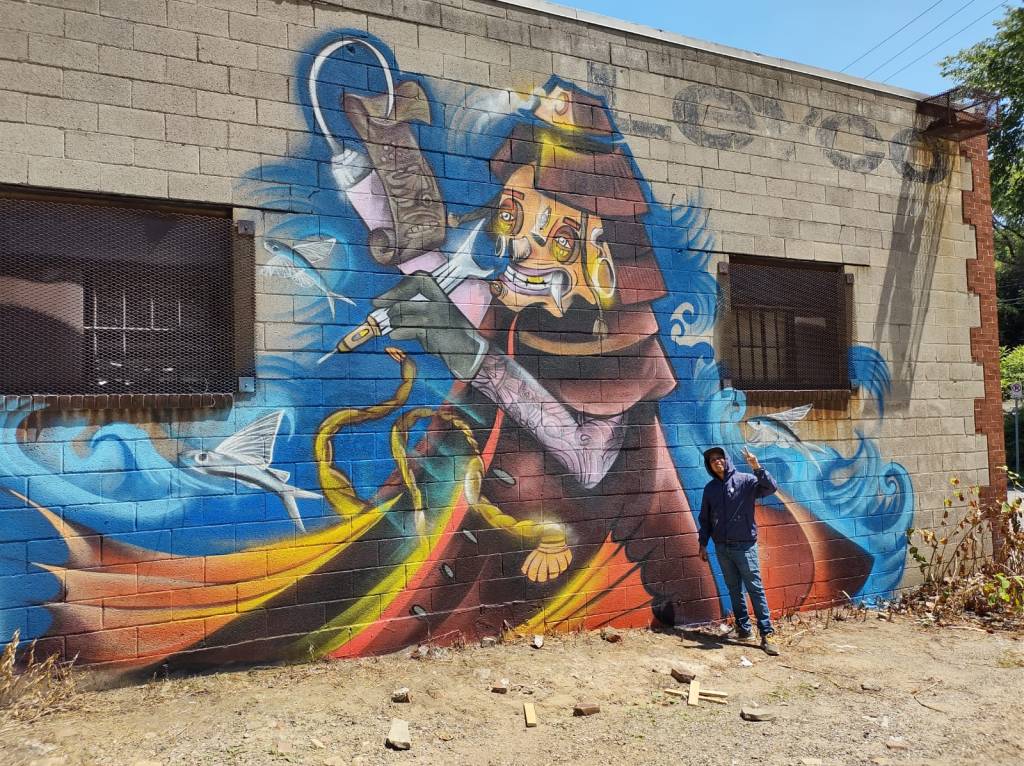
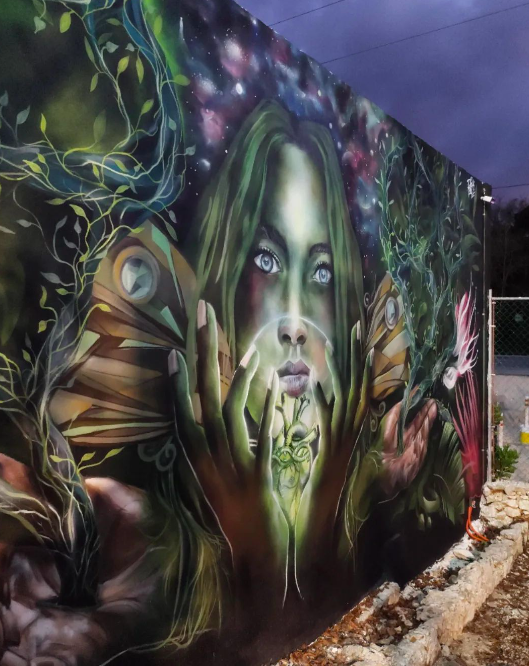
Part of what makes HCUAP unique is that it’s an advocacy organization founded and run by people within the graffiti community. This gets down to even the most granular of details—we’ve used catering by a chef involved in the community. Very little advocacy and programming exists that’s by graffiti writers, for graffiti writers. Either graffiti is a fetish for outsiders to gawk at, or it’s criminalized and stigmatized. HCUAP provides a middle ground. Gonzales and Pilster serve as something of the public face for graffiti in Pittsburgh through their muralism and the amount of visibility they’ve contributed for graffiti can’t be understated. Getting to spend time with de la Selva, Tikay, and James as part of HCUAP was a privilege. As with all graffiti programming, there were a myriad of special moments that can’t be put into words—one is that James’s parents knew he was coming to the mainland and drove the five hours from Indiana to come and see him while he was in the “lower 48.”
Part of HCUAP’s goal, as Bruce has expressed it to me during events, is that those who get to interact with resident artists can now say “I know somebody in Hawai’i/Chile/Mexico.” The residency provides a cross-cultural exchange for people in Pittsburgh, a city which while it has many international connections can sometimes feel very insular. A residency like HCUAP’s provides the best of what art can offer: conversation and sharing. “I was surprised by how much history Pittsburgh has,” James said of his time in the city. “You guys have a great art community. Graffiti is alive in Pittsburgh.”
